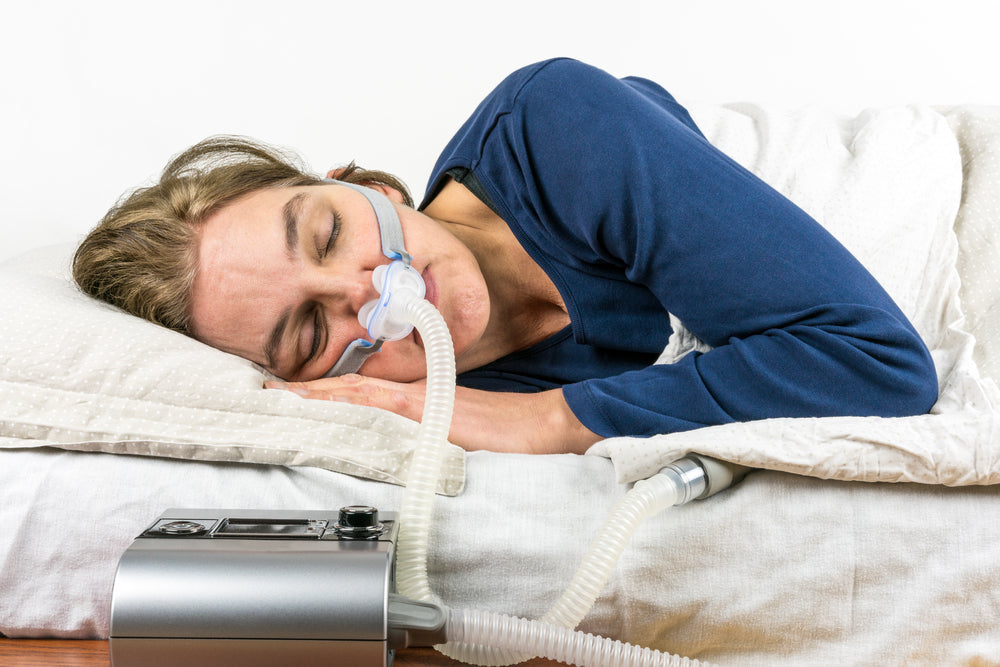One of the biggest hurdles to securing appropriate CPAP therapy is patient adherence. But, getting used to sleeping with their new mask can be a real struggle for patients, and the temptation to take it off and sleep without it is very high. But CPAP and other, similar treatments remain the best and most effective way to treat sleep apnea.
You already know how important CPAP adherence is, but here are 5 easy steps you can give to your patients if they are struggling to overcome the obstacles associated with CPAP therapy.
Educate Your Patients
While most patients may be relieved to know that their sleeping disorder doesn’t require extensive behavioral or medical intervention, the new reality of sleeping with a mask on may be difficult to stomach. It’s important you review with your patients the benefits of their CPAP therapy in how it will improve their health in the short- and long-term.
Make sure they are aware that interrupting or stopping treatment can have an immediate impact, not only on their quality of sleep, but on their quality of life as well. By being honest about the dangers of interrupted CPAP treatment, your patient will likely be more open to adapting their habits and developing new ones that coincide with their prescribed treatment.
Get Used to the CPAP While Awake
Adjusting to CPAP therapy can be challenging, but make sure that your patients ease themselves into wearing the mask on their own terms. Suggest wearing the mask for a few short periods during the day at first, particularly when they’re not tired, so they can find a comfortable, secure fit. Then, suggest wearing the mask while watching TV or reading a book so they can get used to the feel of it on their face.
Remind them that their equipment provider will set up all the pressure settings to get them the best therapy possible, but they may need to make small changes to the pressure or humidifier settings to make it just right for them. Remember, that there are a couple different kinds of masks they can use and one may be more comfortable than another. Remind them that they have options and do not have to live with a very uncomfortable mask.
Find The Right Mask
Remind your patient that not all CPAP masks are created equal. One of the easiest ways you can encourage your patient to increase their CPAP compliance is by ensuring they have the best CPAP mask for them. Take time to show them all of their options before starting therapy so they can gain familiarity with all options and decide which they may want to try first.
There are 3 basic types of masks:
- Nasal Pillows: These rest at the entrance of the nostrils before the nose. Patients can wear nasal pillows with glasses without obstructing their vision.
- Full Face Masks: Full face masks cover both the nose and the mouth. These are ideal for patients who breathe through their mouths during sleep.
- Nasal Masks: Nasal masks use the best of both worlds because they cover the nose while being smaller and lighter than full face masks.
Remember that your patient may be wary after disliking the fit of one mask and may be hesitant to try a new one. But go over the pros and cons of each mask so they can make an informed decision before starting treatment. Our videos on the different masks types may also be helpful.
Develop a Good Nightly Routine
As a healthcare professional, you know that developing a consistent bedtime routine is imperative to healthy sleep. So here are a few important suggestions you can use to help your patient craft a good bedtime routine that lets their brain know it’s time to turn off.
- Try to go to sleep and wake up at the same time everyday—even on weekends
- Avoid napping throughout the day
- If they exercise, do it in the morning
- Avoid any caffeinated beverages after 4pm
- Develop a clear routine prior to sleeping (shower, oral hygiene, close electronics, etc.)
- Avoid as much “blue light” as possible from screens and other devices
For CPAP newbies trying to adjust to their treatment, following these simple rules will make falling asleep much easier and will likely shorten their adjustment time.
Ensure a Comfortable Fit
Of course, you’ll want to make sure that your patient’s mask fits them comfortably, but inform them that they may need to make subtle adjustments that will make it exactly right.
Two things they’ll want to adjust perfectly are seal and comfort. Suggest they stand in front of a mirror while wearing their mask so you they make sure it’s centered on their face. Once they have the mask on in a comfortable place, they can attach the tubing to the CPAP machine and connect it to the mask.
Please remind your patient that our face contours will change once we lay down, so be sure to have them test it laying down as well to maintain a comfortable seal throughout the night. This ensures the most effective sleep apnea therapy possible.
These are only a few of the tips and tricks you can suggest to your clients before and during their CPAP therapy. It is imperative that you review all your patient’s options with them beforehand so they feel informed and empowered to make a thoughtful decision about their sleep apnea treatment.
If you make yourself an available resource for your sleep apnea patients, then you can help identify any future potential issues with compliance and adherence. By finding these problems early, you can make sure they are getting the quality sleep they need to live their best lives.

